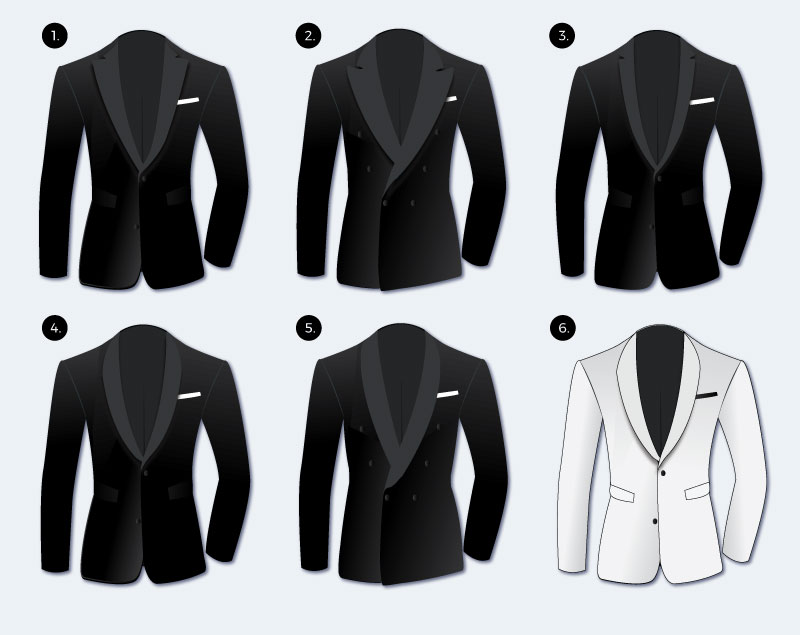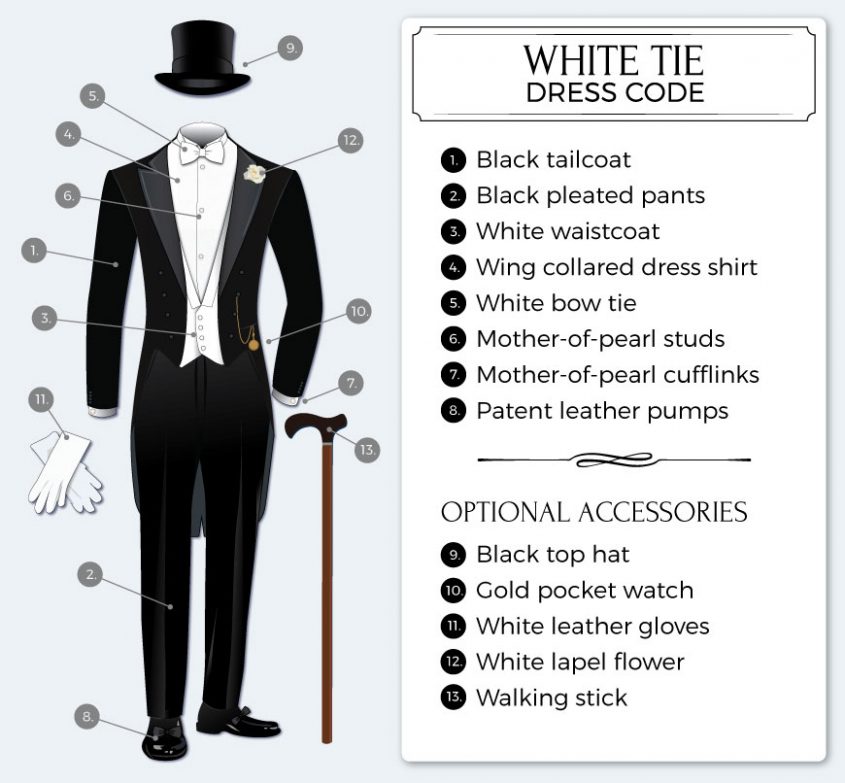The TuxeDo’s and Do Nots
Most well-dressed men know the rules and trivial guidelines involved with appropriate business attire. But when it comes to knowing the ins and outs of formal dress, specifically as they pertain to the black-tie tuxedo, all but the keenest on fashion etiquette are left feeling a bit perplexed. Unlike dressing for the office, proper formal dress requires closer conformity to the rules. Although you will want to make a statement, do so within the standards of taste. As Alan Flusser once said, “The great dressers of our time do so by bending, though not breaking, the rules.” A few simple principles adapted from Flusser’s Clothes and the Man will help you feel confident the next time you receive an invitation to the big inaugural ball or last-minute Christmas formal.
White Tie vs. Black Tie
There are two basic outfits that you may be called upon to wear for formal occasions, “White Tie” and “Black Tie.” White tie is the more formal of the two and refers to a formal coat with tails and white pique’ vest and bow-tie. Black tie, on the other hand, refers to the more common tuxedo or “dinner jacket” in black or midnight blue, worn with any tasteful bowtie and vest or cummerbund.
***Note: “Black Tie” refers to the formality of the event, not necessarily the color of the tie. Many a man has been embarrassed by showing up at a “Black Tie” event with a solid black necktie and a business suit. Another word of advice: When the invitation reads “Black Tie Optional,” it is best to assume that it is not. And finally, the white dinner jacket with contrasting trousers is most appropriate for summer and resort occasions.***
Jacket
There are only two acceptable jacket styles in formal dress for men: the peak-lapel jacket in single or double breast, and the shawl collar in single or double breast. Notch-lapel tuxedos have made a surge in the marketplace in recent years and have gained widespread popularity. Although lapel widths vary slightly every six to eight years, a classic tuxedo in moderate styling should give you at least eight to ten years of good service, provided it is well-maintained and safely stored. Now that we have laid the foundation for formal etiquette, let’s look at the individual components of the formal ensemble. Once the basics are covered, we will have some fun in the accessory department.

1. Single Breasted Peak 2. Double Breasted Peak 3. Single Breasted Notch 4. Single Breasted Shawl 5. Double Breasted Shawl 6. White Dinner Jacket (Photo: www.tie-a-tie.net)
Shirt
Several appropriate styles exist here depending on the formality of the event and how adventurous is the dresser. The wing collar and straight collar with French cuffs and pleated front are always a safe bet. But the fashionable man might try making more of a statement with a white jacquard shirt with a contrasting black band and no tie, or even an off-white formal shirt in ecru or gray.
Vests, Cummerbunds, and Bow-Ties
Strictly speaking, the waistband of the trousers should never be seen. Therefore, a cummerbund or vest should always be worn. The pleated cummerbund is worn with the pleats opening at the top. This tradition carries over from early cummerbunds being fashioned with a small pocket between the folds to hold opera tickets. The most formal of colors for the cummerbund and bow-tie is black, and every well-prepared dresser should own a solid black set in either satin or grosgrain. Although one may choose to brighten things up a bit with a colored set as well, the black bow-tie will always work with an interesting formal vest.

(Photo: www.daviddonahue.com)
Trousers
Your tuxedo trousers should always match the jacket and should receive a plain hem and never a cuff. The trousers are pleated in front with a black braiding or satin ribbon adorning the outseam of each leg.
Socks
The hose of choice should be in silk or fine cotton. Select black with white or colored accents for the more stylish presentation or stick with solid black for a more subtle look.
“Tuxedo” Shoes
Although the patent leather lace-up is the most popular of formal styles, the truly sophisticated evening dresser will “step out” with an evening pump in patent leather or velvet.

Photo: Dante Black Lace-Up (www.Maganni.com)
Cufflinks and Studs
You’ve stayed the straight and narrow until now with the white, straight-collar shirt, patent lace-ups, black tie, and cummerbund. Now add a little zest from the jewelry section! Nothing attracts more attention and gets you noticed like interesting jewelry with black onyx, gold knots, sterling “buttons” or inlays of semiprecious stones. Miniature golf clubs, golf shoes, alligators and longhorns…the possibilities are endless.
Miscellany
The aforementioned tips cover the essentials of formal wear. However, to carry the formality a step further, try one or two of the following: a folded linen pocket square in solid white or a pocket watch and chain.


